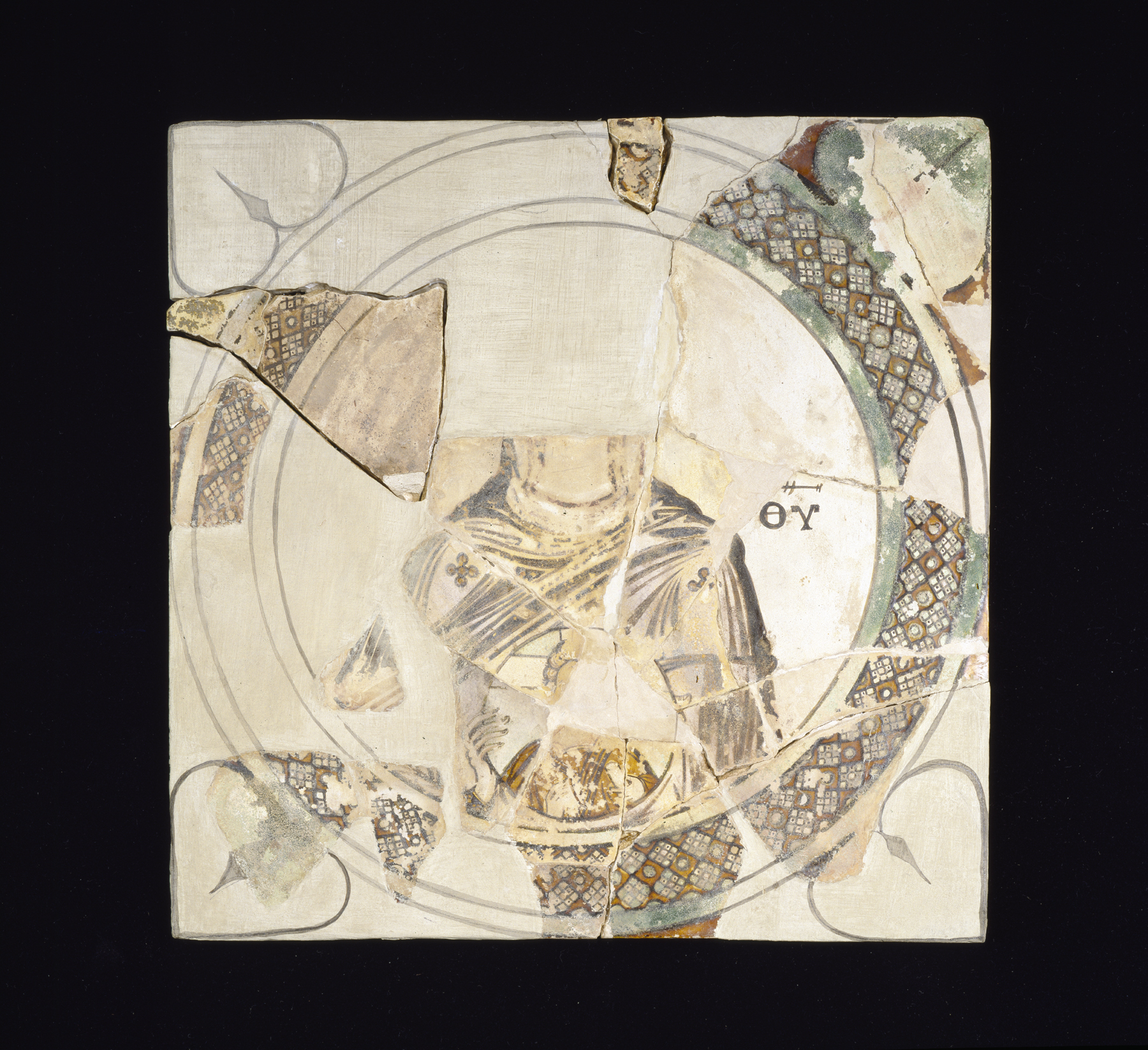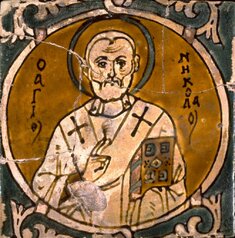Virgin and Child
This installation of tiles reflects the form of an iconostasis, or icon screen, used in Byzantine churches to divide the sanctuary - the place of the priest - from the rest of the church. The tiles are related to others in the former Byzantine capital of Constantinople (now Istanbul), and have been combined here to suggest the original appearance of one of these screens. Around the year 1000, when these brightly glazed tiles were made, icon screens were ornamented with images of Christ, the Virgin, John the Baptist, and other saints. These figures created a powerful devotional ensemble to which people could address prayers on behalf of themselves and their families.
The experience of the faithful inside a Byzantine church was shaped by images painted on walls and wooden panels, incised on metal and enamel liturgical objects, and embroidered on clerical vestments and cloths. The awe-inspiring vision of the sacred icons was further complemented by the pungent smell of incense, the flickering of lamps and candlelight, and the echo of chanted hymns. The division of the church into distinct chambers, from which the priest would emerge to display the Holy Bible or the Eucharistic offerings of the bread and the wine, served to further enhance the atmosphere of mystery and wonder for the assembled congregation.
Conservation
| Date | Description | Narrative |
|---|---|---|
| 6/10/1961 | Treatment | loss compensation; coated |
Geographies
Turkey, Istanbul (Constantinople) (Place of Origin)
Measurements
Overall: 11 3/4 x 11 3/4 in. (29.8 x 29.8 cm)
Credit Line
Partial museum purchase with funds provided by the S. & A.P. Fund, 1956 and partial gift of Mr. Robert E. Hecht, Jr., 1957
Location in Museum
Not on view
Accession Number
In libraries, galleries, museums, and archives, an accession number is a unique identifier assigned to each object in the collection.
In libraries, galleries, museums, and archives, an accession number is a unique identifier assigned to each object in the collection.
48.2086.11



